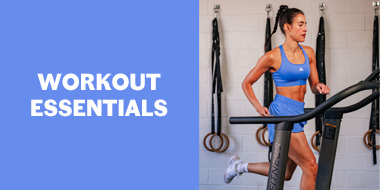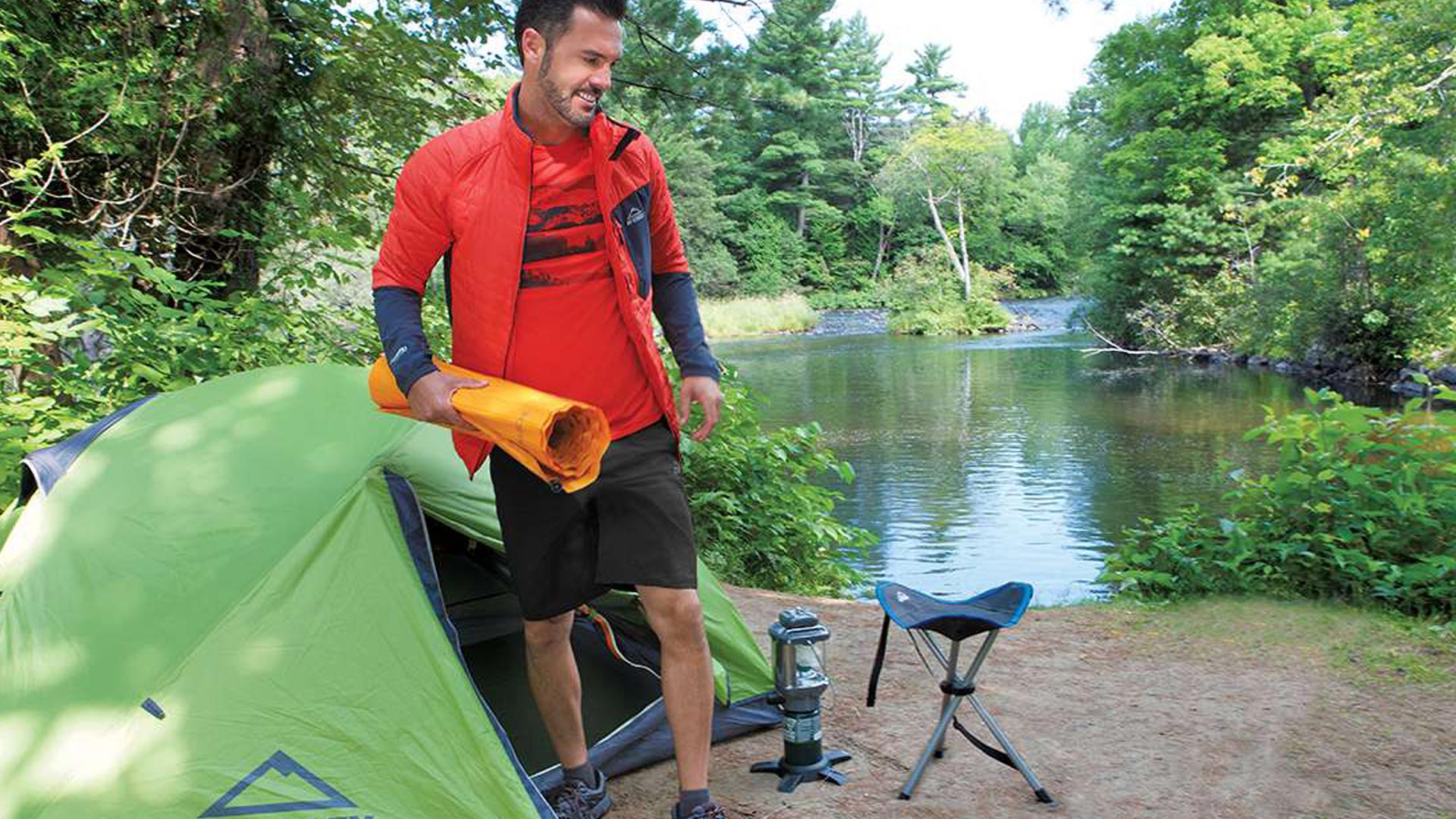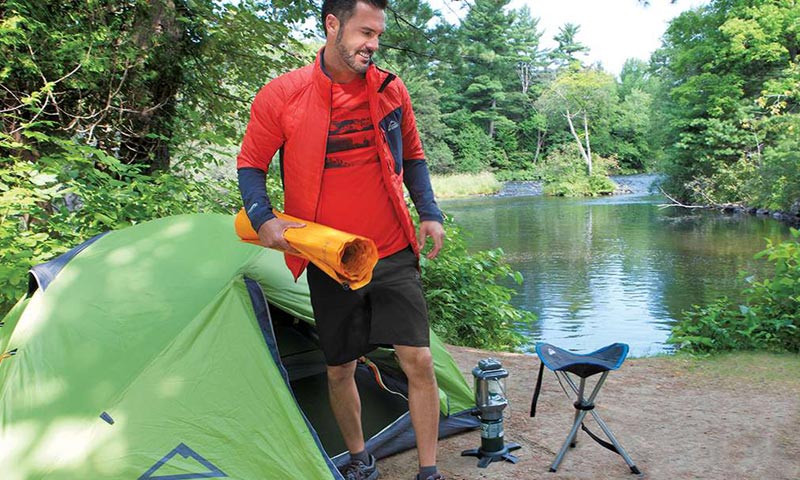The type of sleeping pad you should choose depends upon a single thing: what kind of camping trip you intend to take. Will it be for one day or three, or for an entire week? Will you be hitting the trail to a rugged area on your own two feet or will you be enjoying the relative comfort of getting around by car, having a base camp, and so on? There are three main types of sleeping pad, each with its own advantages and disadvantages.
The first, the inflatable air mattress, finds its fans among campers for the comfort it provides, even though it is a poor insulator. Heavy and bulky in itself, unless you have lungs of steel it also requires the use of a pump, which increases the load to carry. It is best suited for those using a vehicle for their camping trips.
The second option consists of a closed-cell foam pad, which is thin, firm and light in weight. In addition to providing relatively effective insulation, this type of pad absorbs little moisture and is easy to roll up and carry tied to the outside of a backpack. Pricing of these, although generally reasonable, varies according to whether or not they are made with Evazote (or EVA) foam—a dense material that makes the pad stronger, more insulating and more flexible when the temperature drops, but also more expensive.
The third and final type, the self-inflating pad, is proving an increasingly popular choice. Waterproof, durable and able to be rolled up extremely compactly, it offers superior comfort and insulation, and quickly inflates on its own, thanks to a layer of foam trapped within a watertight membrane. When rolling up the pad, its valve is left open to expel all the air, then closed; once it is time to use the pad again, you unroll it with the valve open. The foam then acts like a sponge that sucks up air and the pad regains its original shape.
Except in the case of inflatable air mattresses, sleeping pads are available in full-length or three-quarter-length sizes. The latter are shorter and lighter, but, unless you curl up, your feet will hang out over them while you sleep. Some wider models are also available for campers who have a bigger build.















